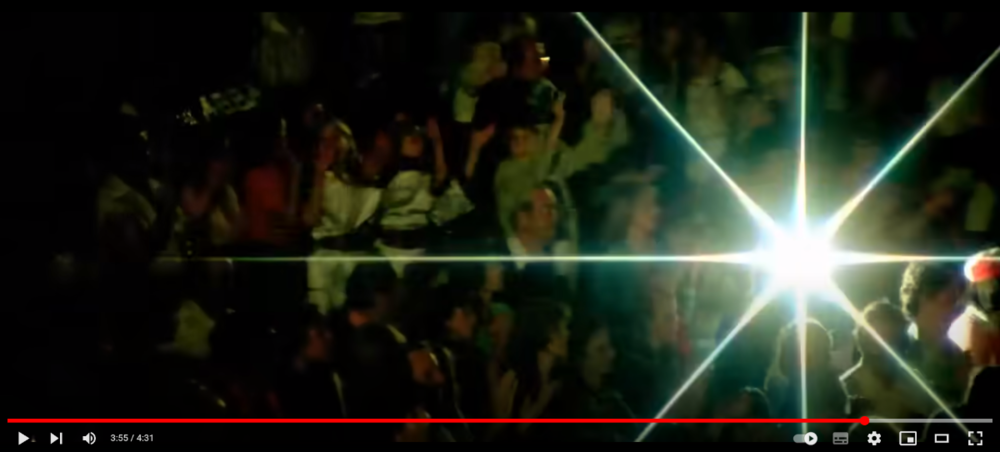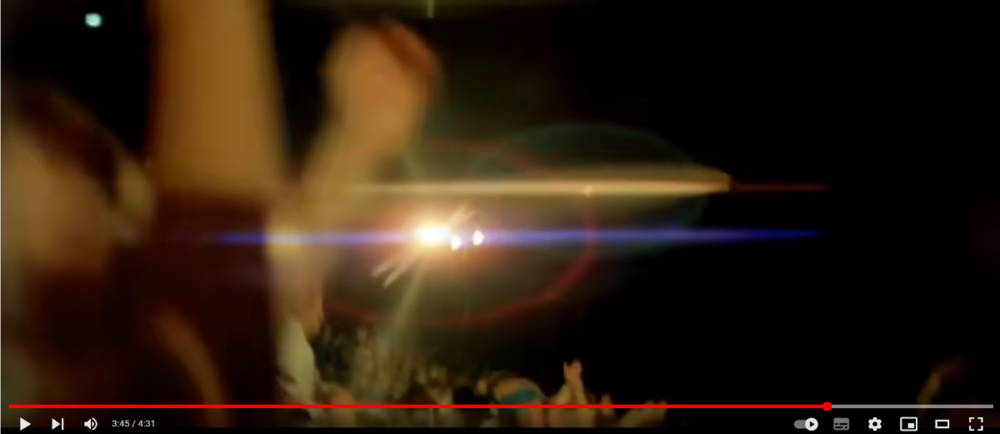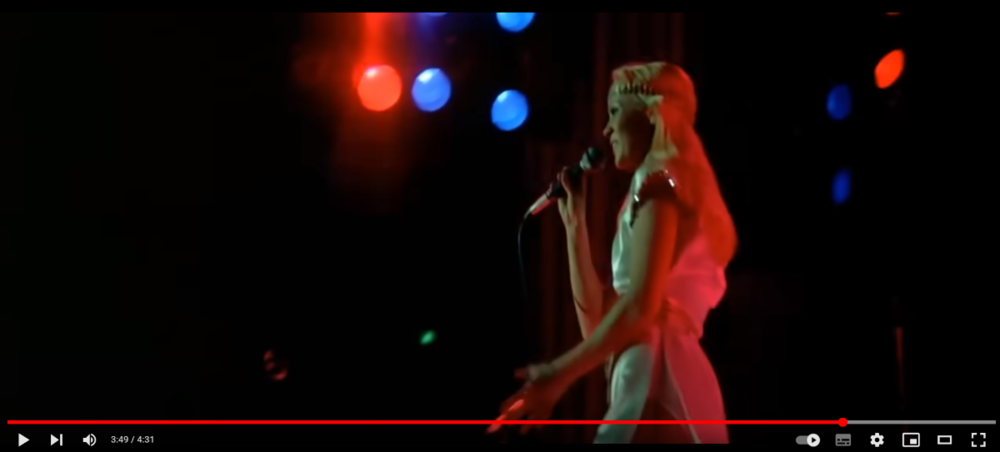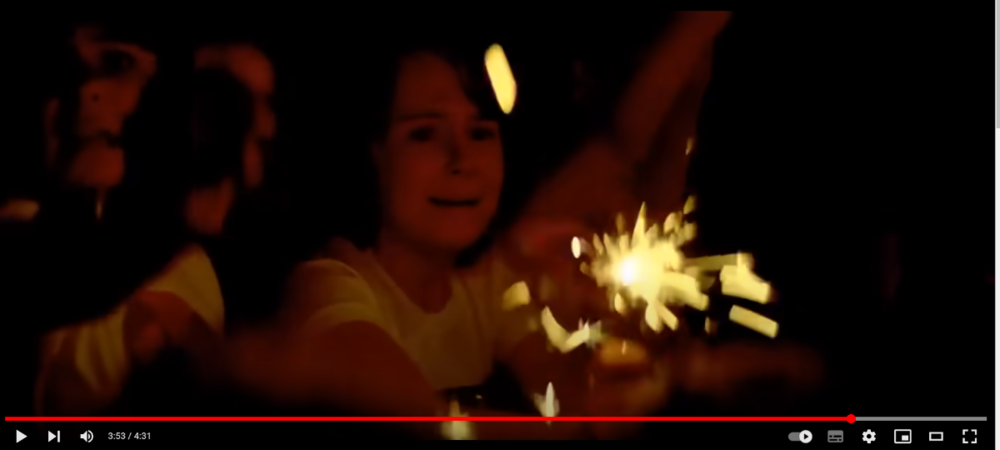-
Posts
13,756 -
Joined
-
Last visited
Everything posted by Phil Rhodes
-

The influence of video game style on filmmaking
Phil Rhodes replied to Jon O'Brien's topic in General Discussion
To a great extent it's likely a learned response to the zeitgeist. That said, any sort of moving camera inherently encodes three-dimensional information into a fundamentally two-dimensional medium, so there's possibly some argument for the general use of camera motion. -
I think the better question is whether film cameras actually need to have particularly high-precision pulldown in 2024. Everything's going to be electronically stabilised anyway - witness the results people are getting even out of Super-8 these days. Get the image on the film somehow. Where barely matters, within sane limits.
-
I'd love to see how you've retrofitted it with LEDs. Is that something you can go into more detail about? There seems to be a pretty healthy appetite for film handling services which is good to see.
- 13 replies
-
- color grade
-
(and 1 more)
Tagged with:
-

High quality individually addressable LEDs?
Phil Rhodes replied to Teddy Young's topic in Lighting for Film & Video
Not that I know of. All the addressable LEDs I'm aware of, things like the WS2812, are RGB-only devices. They also use pulse width modulation at a rate which is likely to cause flicker problems. It's not impossible to think that someone has made something better but I'm not aware of it. You certainly can get individual emitter devices which have RGBW clusters on them. I'm not sure if any of those have a particularly great white emitter but it's possible that with some careful mixing you could end up with something reasonable, I'm not sure. You could also spin your own by clustering the smallest-available surface mount LEDs on a tiny PCB. It wouldn't be as small as a WS2812, but depending what you need it might work I'm not sure what options there are for tiny driver chips but at least that way you'd have the choice of emitter types and drive electronics. All of that assumes you've googled extensively for a high colour quality device that's available off the shelf. As I say I've not come across one but there's a lot of stuff out there. P -
That's a Mole junior rolling stand, or something very like it. I own two very old ones. I'm not sure if they're still in manufacture. More a TV studio thing, I think, but you should be able to find some.
- 11 replies
-
- 1
-

-
- lights
- light stand
-
(and 3 more)
Tagged with:
-
What is this"grip truck" of which you speak... But seriously, I wandered into Filmtools here in LA this week where they had one on display, and the number appears to be twelve inches.
-
I'm after something on that order, something that can replace a rideable dolly in at least some circumstances. I guess it doesn't make that much difference, really. Ten or twelve inches was my inclination. Saw a rather nice one at NAB with the motor drive system.
-
Thanks - though I don't know what the standard is...
-
Hello! Is there anything like a standard for the spacing on miniature slider dolly track? I'm thinking things like this: I'm sort of work-in-progress here. I have parts that would permit 9", a hair less than 230mm, which... looks reasonable, I guess? The tube will be 35mm on the basis that's what the clamps handle. P
-
I don't really know enough about this to comment, but I would like to ask questions about the working relationship between the armourer and the senior crew, particularly the first assistant director. I have other questions about her qualifications and how they interact with family relationships as a common and expected route to advancement in the film industry. I suspect people other than this armourer have questions to answer but I would be interested to know how such an accident could take place without her having made large mistakes.
-
Do you have another cable or other device that can power the light? If so, measure its output with a multimeter. It's very common for the centre pin of those DC connectors to be positive, and I would expect the shield (also called the screen in English) to be used as the negative connector. However neither of those is guaranteed and you should not make assumptions. If you don't have another power cable with which to compare, maybe just ask Dedolight for the information.
-

How was this hall lit? (Blue Jean, 2022)
Phil Rhodes replied to Aidan Brook's topic in Lighting for Film & Video
Hate to say it but to me that just looks like they walked into any school sports hall on a dull, overcast day and shot it under available light. Possibly it's something to do with the fact that my earliest memories are of environments like that.- 2 replies
-
- 2
-

-
- lighting
- ambient light
-
(and 1 more)
Tagged with:
-
I hate to say it but absolutely nothing in that transcript surprises me one iota.
-

Is JPEG 2000 encoding a thing now?
Phil Rhodes replied to Daniel D. Teoli Jr.'s topic in Post Production
Red's been using it since day one. (Redcode is, or at least certainly was, just JPEG-2000). -
I mean... for all its faults, it's well lit.
-

400 Jo-Leko vs Dedo 400 with spot attachment?
Phil Rhodes replied to Safaran Qureshi's topic in Lighting for Film & Video
Mirror on the Aputure? -
I have an FDM printer; if anyone needs anything done in the UK, more than happy to oblige.
- 55 replies
-

Shooting live music performances in the 70s
Phil Rhodes replied to Phil Rhodes's topic in Lenses & Lens Accessories
Don't trust the exact resolution too much, here, I just hacked them out of a YouTube player with snipping tool. I guess my main concern was what the effective sensitivity and working stop might have been on something like this. Clearly they might have compromised the lighting for the crowd in order to make it work for the camera, and there's some fairly obvious instances of large, powerful lights (not the big Xenon followspots) sweeping the crowd to make it visible, though I don't know if that was done routinely. At least two cameras have zooms. 70s anamorphic zooms, in the dark? Ouch. -
The following frames are from a 1977 performance by ABBA in Australia (full video). For something more pedestrian compare this, which is presumably from within a few years of the same time, in 4:3 and much more conventional. The first one shows pretty unequivocally that an anamorphic lens is in use, even if the aspect ratio hadn't already given it away. This makes me wonder: we can see the audience pretty clearly, and anamorphics and film stocks of the period would hardly have been fast. Depth of field is... present and correct, but it seems well exposed. The blacks are a void. I wonder what the light levels would have been like and how it would have been to operate - this is a handheld shot. Obviously, this is a modern scan, so it has potentially been cleaned up a lot. This looks archetypally Panavision to me but I wouldn't be too shocked to discover it was some other option of that period that I haven't heard of. There's also some flickering edge flares on occasion, one frame on and one frame off, which I've seen in all kinds of movies but I'm not sure if it's specifically associated with any one camera design. Presumably it's something kicking off one leaf of the shutter but not the other. Mere seconds later, someone takes a flash photograph. This is the first frame in which any effect is visible. As this is a magnesium flashbulb, it takes about ten frames to die down to a lambent glow, and a few seconds to extinguish completely. The flare is wildly different; this is presumably a deliberate star filter, which is believable for the period, but I'm not sure why it isn't also producing an anamorphic flare as this would have been extremely intense. Some shots show eight-pointed star flares; others don't. There's another photo flash in the last shot of the video which doesn't show a star but does show a blue streak. Apparently not every camera was filtered. Stage shots scream anamorphic, partly because there's some visible vertical elongation of out-of-focus regions, but also because the top and bottom edges flare. This big red flare is being produced by another red-gelled parcan above the one we can see, which dances in and out of frame and produces several flashes like this. Anamorphic artefacts are clear in the sparks produced by these children's sparklers.
-

A processing machine up for auction...
Phil Rhodes replied to Gareth Blackstock's topic in Film Stocks & Processing
That's a labour of love just to be able to do monochrome processing! What next, 65mm colour? -
I'm not an expert either, but like Joerg, I'd expect to see more sign of the heat of the airliner's engines, especially in the cone directly behind the engines themselves, and in terms of the cooling and spreading of the contrails, which does not seem to occur. I'd expect behaviour to vary by altitude, pressure, humidity and other conditions, but see here. It's a matter of the dynamic range of the thermal imager and it's not necessarily completely unconvincing. It's notoriously difficult to fake thermal imaging footage, either way. I was once asked to do it for a military-themed short film because high resolution thermal imaging cameras are rare and expensive, especially with very long lenses. It's hard to get it to look right, though we were featuring humans. There's some vibration in the thermal imaging shot which appears to be generating absolutely no motion blur, which is slightly suspicious, but thermal imaging cameras may have very odd behaviour as regards shutter speed, so again, while slightly odd, this is far from conclusive. I'd say if this has been faked from the ground up, in a 3D rendering package, or something, it's been done with a reasonable degree of enthusiasm. Just adding in the swirling dots is a more trivial job. The cold trails are a nice touch. But in my view the problem with this is more logical than visual. In the thermal-imaged footage, the camera aircraft appears to fly barely beneath the engine exhaust trails, just a few seconds after the airliner passes. It's a dramatic, dynamic shot, the sort of thing you'd see in an action movie, but if you think about it, it's a really unsafe bit of aviation. I suspect this would count as a critically dangerous failure of separation (an airprox) unless the view is from something like a military combat aircraft which has been specifically tasked to follow the airliner. These aircraft were within seconds of colliding. This opens up other awkward questions about the provenance of this footage. What exactly is claimed about where it came from? Who shot it? Where was it shot? Is the airliner in the cruise, in which case why does it appear to be executing what would count as a fairly tight left turn in the thermal footage. And a right turn in the stereo footage, assuming what we see beyond it is the sea, since you refer to it as satellite material. If it's not satellite material, then the blue we see may be the sky, in which case it's a left turn. If it's in the cruise, it would be travelling at perhaps 450-500 knots and tens of thousands of feet. This is considerably beyond the capability of most things which could reasonably be described as a "UAV." Something like a General Atomics MQ-9 Reaper is fairly typical of the general arrangement of unmanned military aircraft likely to be equipped with thermal imaging, with straight wings and a turboprop propulsion system. It typically operates at under 250 knots. They're designed for long loiter times and low fuel consumption, not speed, and would be considerably outpaced by anything Boeing or Airbus have ever made. The only common thing with the speed and altitude performance to intercept a commercial airliner in the cruise is a fighter jet. It's possible some militaries may have high performance drones capable of doing what's shown here but it's certainly not common, which raises the question as to why this particular airliner was of interest to the military. Like so many things of its type, this raises more questions than it answers, and in the end the answer to the question "are there aliens," in a universe as vast as the one we are known to inhabit, the only reasonable answer is "presumably," and that's neither surprising nor controversial. The sad reality is that we have only one example of life existing on a planet to work with, so it's hard to tell, but it's completely plausible that there have been alien civilisations which grew up and died out millennia ago, or alien life which never evolved beyond single-celled organisms, etc. The idea of alien life is not a stretch. The idea of them travelling to earth and bothering airliners probably is.






